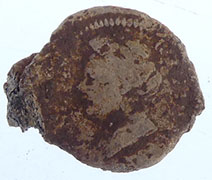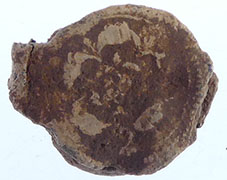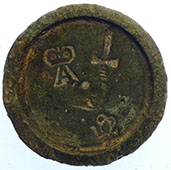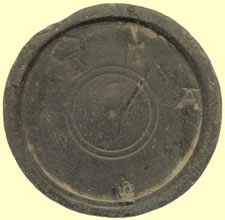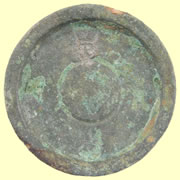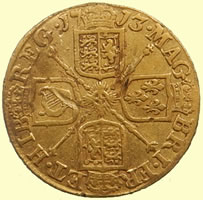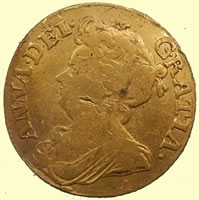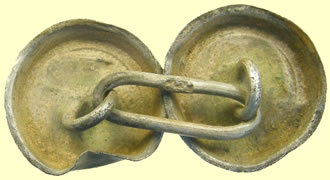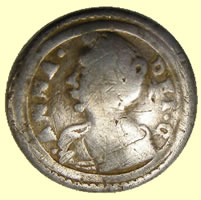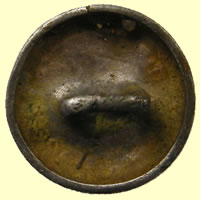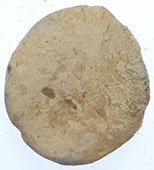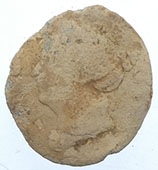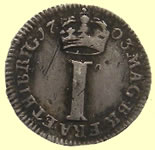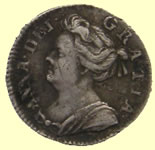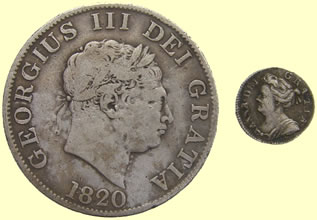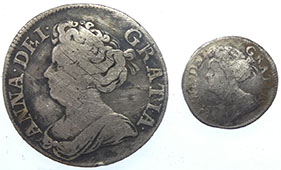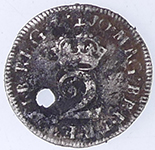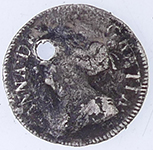
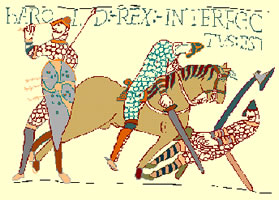
Metal detecting holidays in England with the World's most successful metal detecting club.20 years plus.
Twinned with Midwest Historical Research Society USA.
Anne 1702 - 1714 |
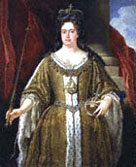 Queen Anne was the last of the Stuart monarchs, and the first sovereign of Great Britain. Queen Anne was the last of the Stuart monarchs, and the first sovereign of Great Britain.
Anne was born on 6 February 1665 in London, the second daughter of James, Duke of York, brother of King Charles II. She spent her early years in France living with her aunt and grandmother. Although Anne's father was a Catholic, on the instruction of Charles II Anne and her sister Mary were raised as Protestants. In 1683, Anne married Prince George of Denmark. It was to be a happy marriage, although marred by Anne's frequent miscarriages, still births and the death of children in infancy. In 1685, Anne's father James became king. He was overthrown in 1688 and Anne's sister Mary, and her Dutch husband William, took the throne. Anne became their heir and with the death of Mary (1694) and then William, with no children, in 1702 Anne was Queen. Within months, the War of the Spanish Succession began. A series of military victories by John Churchill, Duke of Marlborough, including the battle of Blenheim strengthened England's negotiating position at the end of the war. Under the 1713 Treaty of Utrecht, France recognised Anne's title over that of James II's Roman Catholic son, James Stuart and confirmed England's possession of Gibraltar. The last years of the seventeenth century had seen differing policies pursued by parliaments in England and Scotland which included disagreements over the succession. The solution seemed to be unification and so on 1 May 1707 England and Scotland were combined into a single kingdom, and Anne became the first sovereign of Great Britain. One British parliament would meet at Westminster, and there would be a common flag and coinage but Scotland would keep its own established Church and its systems of law and education. Politically, Anne's reign was marked by the development of the two party system, with Whigs and Tories competing for power. Anne hoped to rule through mixed ministries, but in 1708 the Whigs became dominant. In 1710 there was a major shift to the Tories, which lasted until her death. Anne allowed herself to be heavily influenced by her ministers and her favourites, particularly her friend Sarah Churchill, wife of the Duke of Marlborough. Anne died on 1 August 1714. Her only surviving son William had died in 1700, prompting parliament to pass the Act of Settlement (1701) to ensure a Protestant succession. Anne was therefore succeeded by the German Protestant prince George, Elector of Hanover.
1704 Queen Anne bust lead bale seal
1704 Queen Anne trade weights - Crown A cipher - London ewer mark
Circa 1710. Queen Anne. Rev. FVNDAMENTVM QVIETIS NOSTRAE. ECCLES. ANGL. Brass 26mm. by Lazarus G. Lauffer Nuremburg. FVNDAMENTVM QVIETIS NOSTRAE. ECCLES. ANGL means The Church of England is the basis (or foundation) of our Peace. These were early propaganda tokens/jetons stressing that the protestant church was the way to maintain peace in Great Britain. Both Queen Anne & King George faced threats from legitimate claimants to the throne. These were Catholic and supported by french funds and sometimes french troops and had tremendous support in Scotland and Ireland plus some support from catholic families even in England.
1713 Queen Anne milled gold full guinea 24.2 mm,7.67g
|
Stunnning 1704 Queen Anne commemorative silver cufflinks - reported as treasure to museum and donated by Mary Sparks
1704 Queen Anne commemorative silver cufflinks - ANNE
1704 Queen Anne intaglio
Tiny 1703 Anne milled silver penny and size comparision to half crown
Anne shilling v 2 pence comparison
1710 Queen Anne milled silver two pence
|
|
 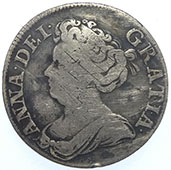 |
 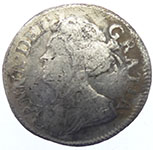 |
| 1710 Anne milled silver maundy two pennce | 1711 Anne milled silver shilling (12 pence) |
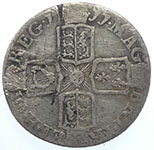 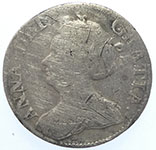 |
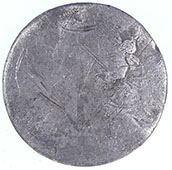 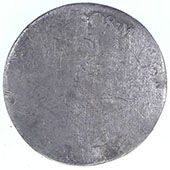 |
| 1711 Anne milled silver sixpence | 1708 Anne milled silver shilling |
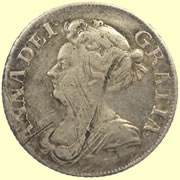 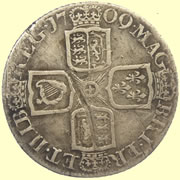 |
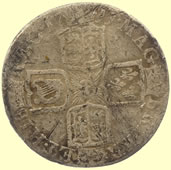  |
| 1709 Anne milled silver shilling (12 pence) | 1711 Anne milled silver shilling |
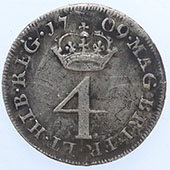 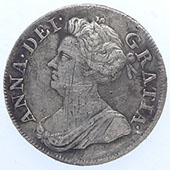 |
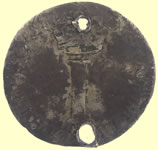 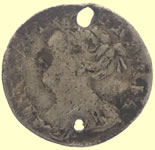 |
| 1709 Anne milled silver four pence | 1710 Anne milled silver penny |
  |
  |
| 1706 milled silver penny | 1708 milled silver shilling (12 pence) |
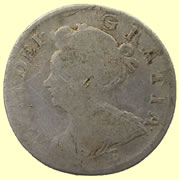 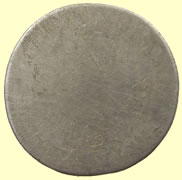 |
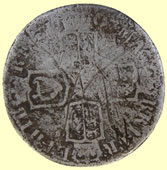 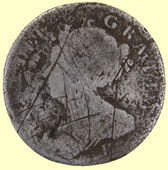 |
| 1704 milled silver sixpence | 1707 milled silver shilling - E below bust - Edinburgh mint |
  |
  |
1707-8 milled silver sixpence - E below bust - Edinburgh mint |
1711 milled silver sixpence |
  |
  |
| 1707-8 milled silver sixpence - E below bust - Edinburgh mint | 1711 Anne milled silver shilling love token |
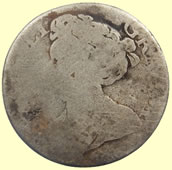 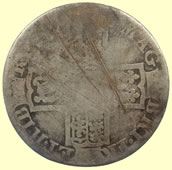 |
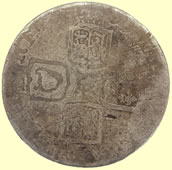  |
| 1702 -14 Queene Anne milled silver shilling | 1709 Queen Anne milled silver shilling |
 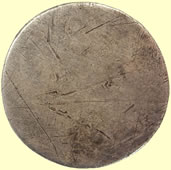 |
  |
| 1709 Queen Anne milled silver shilling | 1707 Anne milled silver shilling - Edinburgh mint mark |
 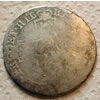 |
  |
| 1703 silver shilling | 1704 love token |
 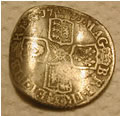 |
  |
| 1711 silver sixpence love token | 1707 (Edinburgh mint) milled silver sixpence |
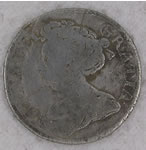 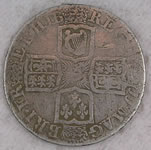 |
 |
1711 milled silver shilling |
1704 milled silver sixpence love token (S shaped) |
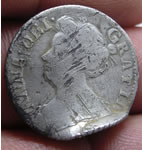  |
  |
1706
milled silver sixpence |
1704 milled silver sixpence |
  |
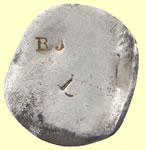 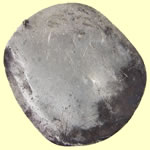 |
| 1711 milled silver sixpence love token in stunning condition - Late shield type | 1704 milled silver sixpence - overstamped BJ love token |
  |
  |
| Anne 1702-1714 milled silver sixpence | Anne 1702-1714 milled silver shilling |
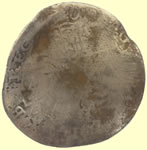 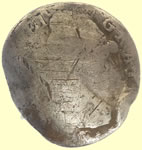 |
  |
| 1706 Anne milled silver sixpence | 1704 Anne milled silver sixpence- love token |
  |
  |
| 1703 Anne milled silver sixpence | 1711 Anne milled silver sixpence |
  |
  |
| 1703 Anne milled silver sixpence | 1711 Anne milled silver sixpence |
  |
  |
| Anne milled silver sixpence | 1704 Anne milled silver sixpence |
  |
  |
| 1707 Anne milled silver sixpence love token | 1708 milled silver sixpence - E below bust - Edinburgh mint |
 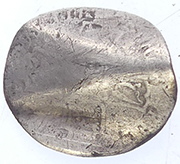 |
 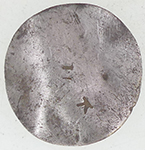 |
| 1704 Anne milled silver sixpence - love token | 1704 Anne milled silver sixpence - love token |
 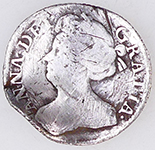 |
  |
| 1711 Anne milled silver sixpence | 1711 Quenn Anne milled silver sixpence |
  |
 |
| 1715 Quenn Anne milled silver three pence | Queen Anne six pence and three pence size comparison |
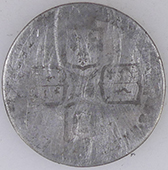 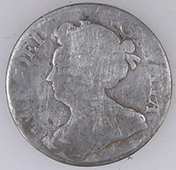 |
|
| 1711 Anne milled silver shilling | |
1704 milled silver half crown (30 pence) |
|
 |
|
